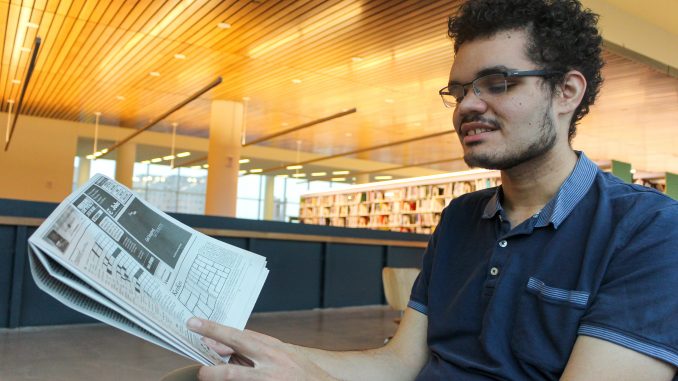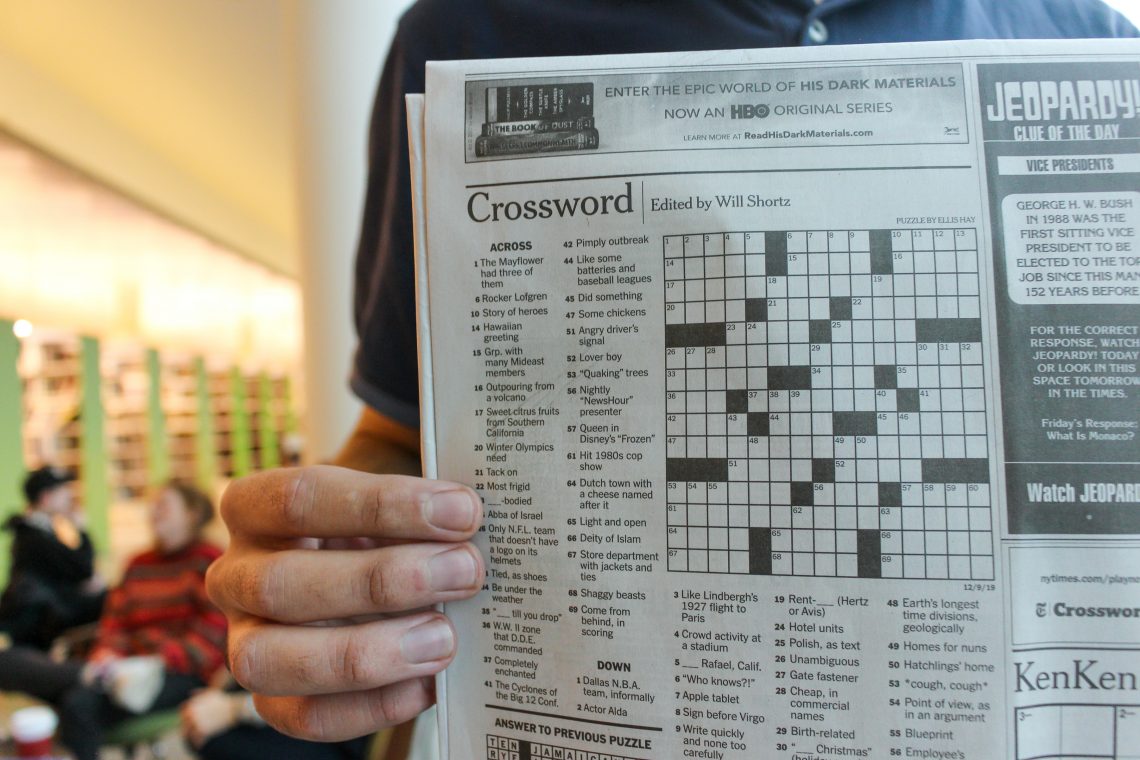
From his mother in Lansing, Michigan, to his sister in Geneva, Switzerland, Ellis Hay’s family members scurried to their closest newsstand on the morning of Dec. 9 to pick up a copy of The New York Times.
They were flipping to the papers’ art section, to see Hay’s name in print next to the crossword.
The senior music composition major published his second puzzle earlier this month. The second puzzle comes just nine months after his debut puzzle in the newspaper in March—Hay’s first published crossword puzzle ever.
“My goal in writing a crossword, or at least in writing the first crossword and in this crossword, is to create something that’s enjoyable,” Hay said.
Hay created the Dec 9. puzzle in February 2018 after submitting it once his first puzzle was published. He said that the first publication motivated him to submit more of his old creations after he “cleaned up their fill”, or re-worked the grid spacing in the puzzles.
He submitted the second puzzle in March, was notified in the summer that it would be published, and received an email on Dec. 3 about its publication date. The puzzle is composed of four 15-letter theme words that Hay chose to be famous place-color associations, like “Hill Street Blues,” “Rhode Island Reds,” “Cleveland Browns” and “Valencia Oranges.”
Like his first puzzle, the Dec. 9 puzzle was published on a Monday, the easiest puzzle-solving day in The New York Times.
“I kinda enjoy Monday puzzles, because they’re not too difficult,” he said. “My parents or people that I know who are really like average crossword puzzles solvers or anything, they can solve a Monday puzzle without too much trouble.”

Hay’s mom, Yvette Collins, said she was looking forward to solving her son’s second puzzle on her own. Hay’s crossword byline reminds her of her late father-in-law, Hay’s grandfather, who would frequently sit at the kitchen table with crossword dictionaries to fill out puzzles, she added.
“He would have loved this, and every time I think about it I think, ‘oh my gosh, I wish he was still alive,’ to kind of appreciate what Ellis has done by creating these,” Collins said. “… It’s just kind of almost a full circle, to think that one of his grandchildren really created two puzzles that ended up in the New York Times.”
Jeff Chen, who has published more than 100 crossword puzzles in The New York Times and co-runs XWordInfo, a blog about the paper’s crossword section, said that only one or two dozen new crossword constructors debut in the paper each year.
“Most people can put together an adequate crossword grid,” Chen said. “But really what makes Will Shortz take note is if there’s a unique theme or something that might give solvers a moment of pleasure that’s kind of unexpected.
Hay, who completes The New York Times crossword puzzle every day, said he always tries to find something interesting to put in his crossword puzzles. After publishing his first puzzle, he bought a wordlist to help him with constructions.
Erik Agard has published more than 50 crossword puzzles in The New York Times and is assistant editor of puzzles and games at Andrews McMeel Publishing, where he edits the USA Today crossword puzzle. Newer solvers come to answer puzzles on Mondays so it’s important to have a higher word choice accessibility in the puzzles. This can be difficult to do for crossword puzzle constructors, he said.
“Something that [Hay] has done, 2 out of 2 times now, that is really hard for me to do personally, is making an interesting Monday,” Agard said. “Because Monday’s have to be really easy, so there’s essentially not a lot of room to get fancy, or do really flashy things that get a lot of interest.”
Hay said publishing his second crossword puzzle comes just in time for his winter graduation from Temple. He plans to use the $500 he receives for publishing the puzzle to buy Christmas presents. Hay’s hopes to collaborate with other crossword constructors on future puzzles and submit more puzzles to The New York Times, he said.
“It’s really enjoyable to keep working at something until you find a solution that fits, and fits well,” he said.



Be the first to comment